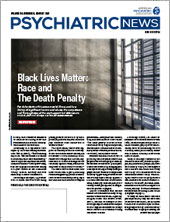FDA Will Review Brixadi Buprenorphine Injection for Opioid Use Disorder
The Food and Drug Administration (FDA) has accepted for review a new drug application for Brixadi (buprenorphine) extended-release weekly and monthly subcutaneous injection for treating moderate to severe opioid use disorder (OUD), drug developer Braeburn announced in June. Brixadi is being reviewed in 8 mg, 16 mg, 24 mg, and 32 mg weekly injections and 64 mg, 96 mg, and 128 mg monthly injections for patients who have initiated treatment with a single dose of a transmucosal buprenorphine product or who are already being treated with buprenorphine. The FDA had rejected a prior new drug application for Brixadi in December 2020, citing “deficiencies found during a recent inspection at a third-party manufacturing facility in the U.S.”
In a phase 3 trial, 428 adults with OUD were randomized to receive either Brixadi or daily sublingual buprenorphine/naloxone for 24 weeks. Patients in both groups had similar rates of weekly and monthly negative urine tests, suggesting that Brixadi is about as effective as sublingual buprenorphine/naloxone in treating OUD.
Brixadi will be available through a Risk Evaluation and Mitigation Strategy program, according to Braeburn.
Two Alzheimer’s Drugs Given Breakthrough Therapy Designation
The FDA granted Breakthrough Therapy designations in June to two drugs for the treatment of Alzheimer’s disease. They are donanemab, Eli Lilly’s therapy that targets amyloid beta, and lecanemab (formerly known as BAN2401), a compound that targets amyloid beta developed by Eisai Co. Ltd. and Biogen Inc. The FDA’s Breakthrough Therapy designation expedites the development and review of drugs for serious conditions. The criteria for Breakthrough Therapy designation require preliminary clinical evidence that indicate that the drug may demonstrate substantial improvement over available therapy on at least one clinically significant endpoint.
The FDA granted Breakthrough Therapy designation for donanemab based on the results of a phase 2 clinical trial called TRAILBLAZER-ALZ that evaluated the safety and efficacy of donanemab in patients with Alzheimer’s disease. In the trial, 257 patients with early symptomatic Alzheimer’s disease received either donanemab or placebo intravenously every four weeks for up to 72 weeks. Compared with those who received placebo, those who received donanemab experienced less cognitive and functional decline over the course of the trial, as measured by the change from baseline on the Integrated Alzheimer’s Disease Rating Scale.
The FDA granted Breakthrough Therapy designation to lecanemab based on the results of a phase 2b clinical trial, Study 201, which examined the impact of treatment with lecanemab on reducing amyloid beta and clinical decline, as measured by changes on the Alzheimer’s Disease Composite Score (ADCOMS).
In the trial, 856 patients who had mild cognitive impairment due to Alzheimer’s disease or mild Alzheimer’s disease dementia were randomized to receive 2.5 mg/kg, 5 mg/kg, or 10 mg/kg of lecanemab once every two weeks; 5 mg/kg or 10 mg/kg of lecanemab once every four weeks; or placebo for 18 months. Patients who took 10 mg/kg biweekly lecanemab had a 76% probability of achieving 25% less decline on ADCOMS compared with those who took placebo.
Zuranolone Shows Promise For Major Depression in Adults
Zuranolone improved depressive symptoms in patients with major depressive disorder in the WATERFALL phase 3 clinical trial, Sage Therapeutics Inc. and Biogen Inc. announced in June. Zuranolone, an investigational oral neuroactive steroid that acts on the GABA-A receptor, has been granted Breakthrough Therapy designation by the FDA.
In the trial, 543 adults aged 18 to 64 years with major depressive disorder received either 50 mg of zuranolone or placebo daily for 14 days. All patients in the study had a Hamilton Rating Scale for Depression (HAMD-17) total score of at least 24 when they enrolled in the study. By day 15 of the trial, patients who took zuranolone had experienced an average drop of 14.1 points on the HAMD-17, compared with an average drop of 12.3 points in those who took placebo. The most common adverse effects were sleepiness, dizziness, and headache. ■
